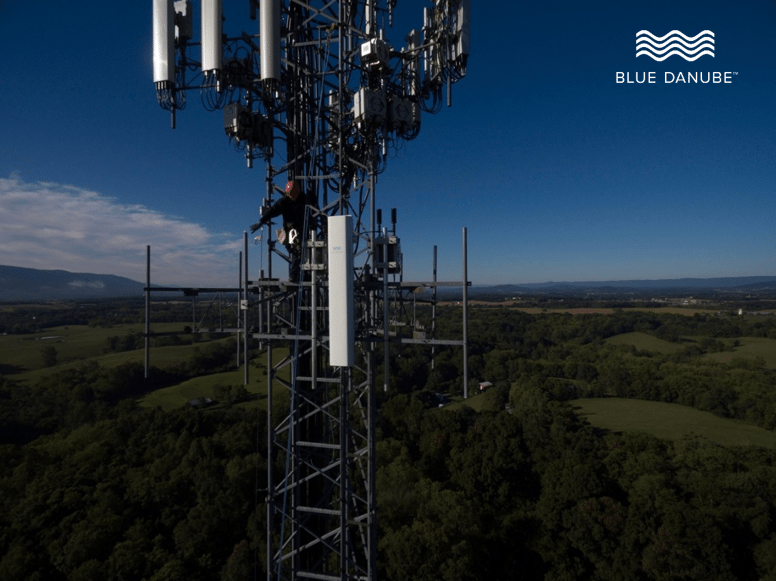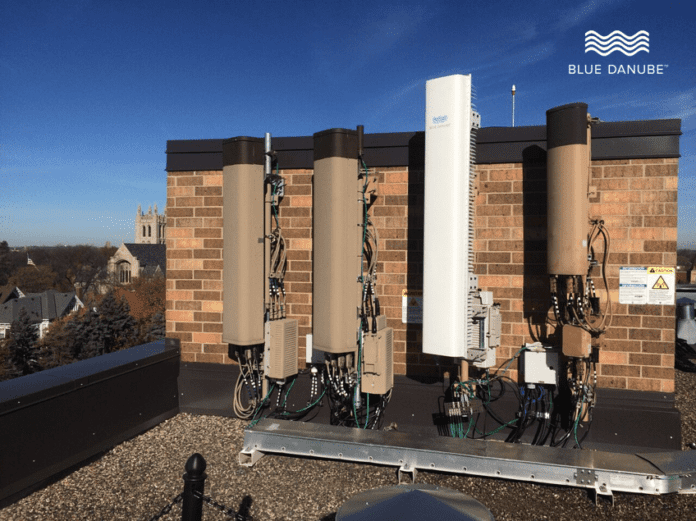AT&T and Shenandoah Telecommunications are both testing FDD massive multiple input-multiple output systems from Blue Danube Systems.
Blue Danube CEO Mark Pinto said that the tests represent the first commercial trials of FDD massive MIMO and that the two sites supported more than 10 terabytes of data over a three-month period.
The AT&T trial location is in a semi-urban area of Minneapolis-St. Paul and uses the AWS frequencies (1.7

GHz in the uplink and 2.1 GHz in the downlink). The ShenTel site is a small town in Virginia and utilizes PCS spectrum (1.9 GHz). Pinto said that the use cases in each instance were different: at the Virginia site, there were both coverage and speed issues, with users often unable to get video quality above 144p. At the Minneapolis-St. Paul location, the sector had much more user density but no local features that inhibited coverage, and the challenge was dealing with clusters of user “hot spots” that would impair the existing network.
“The two sites were very different, but we got very similar results,” Pinto said.
AT&T is an investor in Blue Danube, and according to Pinto, input from AT&T and other carriers was influential in Blue Danube’s design for the FDD massive MIMO system, which it calls High Definition Active Antenna Systems or HDAAS. Although other Blue Danube massive MIMO offerings are wider, the antenna system being tested by AT&T and ShenTel fits into the footprint of a typical cellular antenna.
“AT&T … and other customers told us the same thing: they would use both, but the more popular one from the beginning would be a product that fit within the current passive antenna width,” Pinto said. He said that the Blue Danube massive MIMO antenna is slightly taller than a typical cellular antenna, but that width is often the bigger factor in zoning and tower rent. The mounting technique for the massive MIMO antenna is the same as regular cellular antennas, he added, and the installation is simpler because there is no coaxial cable involved.
Pinto said that throughput speeds saw an improvement of 2x to 5x, and there was a “very dramatic” improvement in instantaneous video throughput: over 20x at both sites, enabling users to access smooth 1080p video.
“We’re able to give the whole site a much better signal and are able to support users without the buffering, at much greater levels,” Pinto said.
Rather than the full-digital approach to massive MIMO that has been taken by other vendors, Pinto said that Blue Danube relies on a hybrid MIMO strategy that uses both digital and analog technology for beamforming. This means a more cost-effective and more power efficient system that can output up to 160 watts but does not need fans, Pinto said. The company’s antennas can also be used either for a traditional 120-degree beam with sharper roll-off than regular sectors, Pinto said, or shaped to support hot spots the size of “a few coffee shops” or an atheletic field. Pinto said that the company is working with network equipment OEMs to enable greater integration with their baseband solutions and to bring down the overall cost of its massive MIMO system — so that operators could deploy such antennas for regular coverage, with the option to upgrade to the massive MIMO capabilities later via software and firmware updates.
Blue Danube said that a second phase of trials is going on now at both sites to “test additional operational modes and traffic scenarios.”

